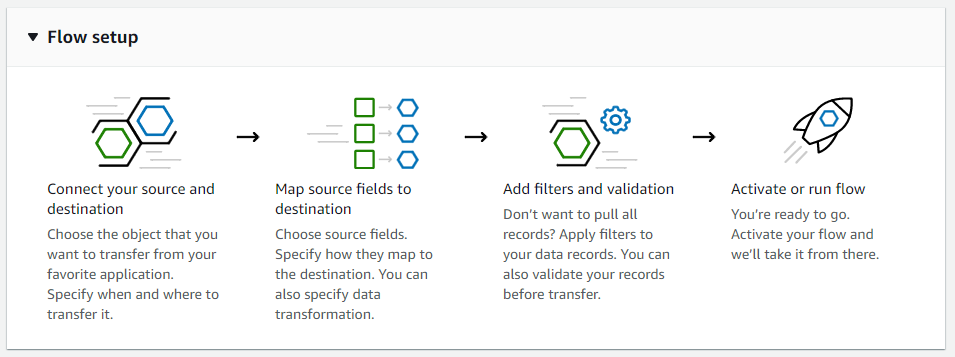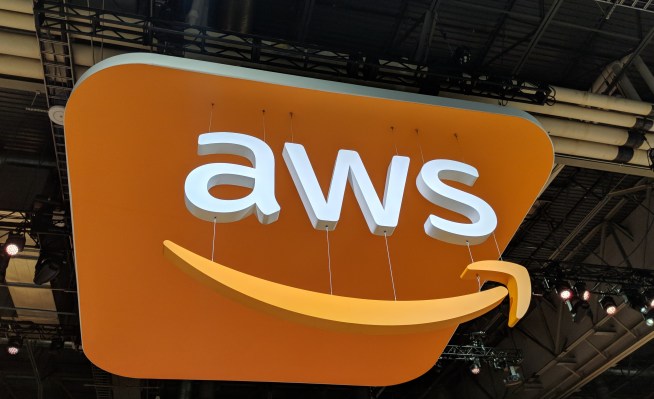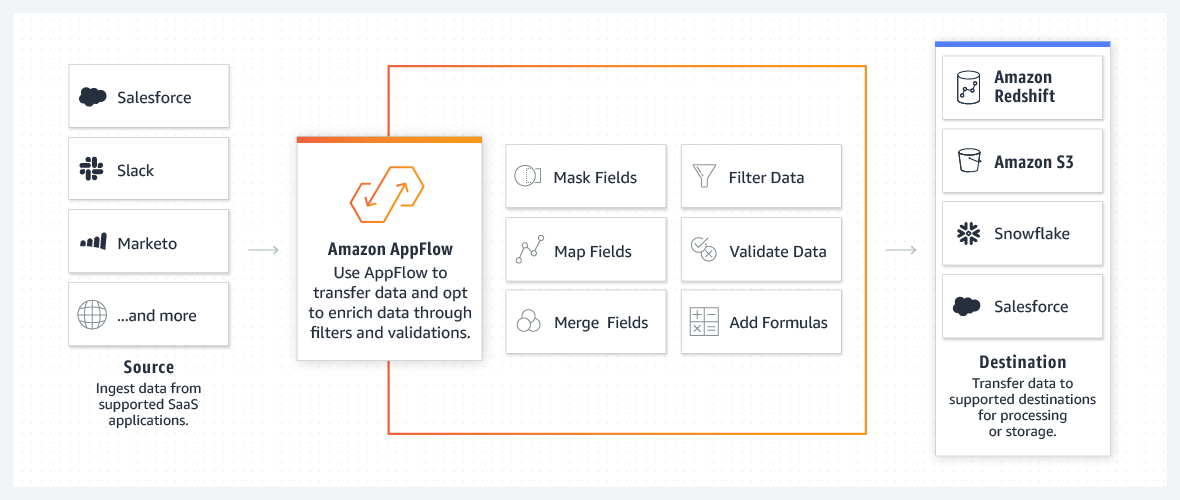AWS today launched Amazon AppFlow, a new integration service that makes it easier for developers to transfer data between AWS and SaaS applications like Google Analytics, Marketo, Salesforce, ServiceNow, Slack, Snowflake and Zendesk. Like similar services, including Microsoft Azure’s Power Automate, for example, developers can trigger these flows based on specific events, at pre-set times or on-demand.
Unlike some of its competitors, though, AWS is positioning this service more as a data transfer service than a way to automate workflows and while the data flow can be bi-directional, AWS’s announcement focuses mostly on moving data from SaaS applications to other AWS services for further analysis. For this, AppFlow also includes a number of tools for transforming the data as it moves through the service.
“Developers spend huge amounts of time writing custom integrations so they can pass data between SaaS applications and AWS services so that it can be analysed; these can be expensive and can often take months to complete,” said AWS principal advocate Martin Beeby in today’s announcement. “If data requirements change, then costly and complicated modifications have to be made to the integrations. Companies that don’t have the luxury of engineering resources might find themselves manually importing and exporting data from applications, which is time-consuming, risks data leakage, and has the potential to introduce human error.”
 Every flow (which AWS defines as a call to a source application to transfer data to a destination) costs $0.001 per run, though, in typical AWS fashion, there’s also cost associated with data processing (starting at 0.02 per GB).
Every flow (which AWS defines as a call to a source application to transfer data to a destination) costs $0.001 per run, though, in typical AWS fashion, there’s also cost associated with data processing (starting at 0.02 per GB).
“Our customers tell us that they love having the ability to store, process, and analyze their data in AWS. They also use a variety of third-party SaaS applications, and they tell us that it can be difficult to manage the flow of data between AWS and these applications,” said Kurt Kufeld, Vice President, AWS. “Amazon AppFlow provides an intuitive and easy way for customers to combine data from AWS and SaaS applications without moving it across the public Internet. With Amazon AppFlow, our customers bring together and manage petabytes, even exabytes, of data spread across all of their applications – all without having to develop custom connectors or manage underlying API and network connectivity.”
At this point, the number of supported services remains comparatively low, with only 14 possible sources and four destinations (Amazon Redshift and S3, as well as Salesforce and Snowflake). Sometimes, depending on the source you select, the only possible destination is Amazon’s S3 storage service.
Over time, the number of integrations will surely increase, but for now, it feels like there’s still quite a bit more work to do for the AppFlow team to expand the list of supported services.
AWS has long left this market to competitors, even though it has tools like AWS Step Functions for building serverless workflows across AWS services and EventBridge for connections applications. Interestingly, EventBridge currently supports a far wider range of third-party sources, but as the name implies, its focus is more on triggering events in AWS than moving data between applications.

